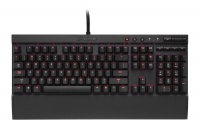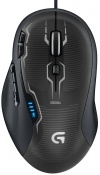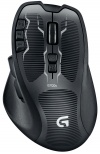Difference between revisions of "Computers"
Jump to navigation
Jump to search
(Explanation on Keyboard mapping and use of trema's.) |
|||
| Line 60: | Line 60: | ||
Press ' followed by c to get ç. | Press ' followed by c to get ç. | ||
Press ~ followed by n to get ñ. | Press ~ followed by n to get ñ. | ||
| − | Pressing ", ', `, ^ or ~ followed by spacebar will result in a single ", ', `, ^ or ~. | + | Pressing ", ', `, ^ or ~ followed by spacebar will result in a single ", ', `, ^ or ~. Most likely, you can just continue typing: if the next character doesn't exist with an accent character, ", ', `, ^ or ~ will preceed the next character; for example pressing ' followed by s will result in the expected 's. |
| − | Tip: if you think it is annoying that a single press on ' or " does not result in the character, think that you probably also need a ' or a " at the end of a string. Then, press ', or " twice to get '' or "". Then use the left arrow to move the carret between the | + | Tip: if you think it is annoying that a single press on ' or " does not result in the character, think that you probably also need a ' or a " at the end of a string. Then, press ', or " twice to get '' or "". Then use the left arrow to move the carret between the quotation marks and type the string between the quotation marks. |
|- | |- | ||
Revision as of 17:23, 6 June 2016
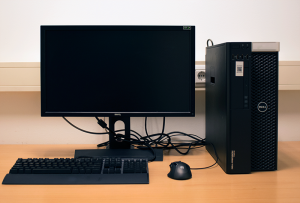 Typical lab setup | |
| Test Results | |
|---|---|
Lab Computer
See also: Dell Precision T-series
All TSG-supported research labs have been equipped with a Dell Precision T-series computer. You can find the exact type of your lab computer printed on the front of the case. The current model is the T3610, of which you can view the simplified specifications below. Consult a member of the TSG if you are not sure which computer you have been using for your past research.
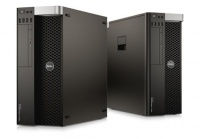
| |
|---|---|
| Dell Precision T3610 | |
| CPU | Intel Quad Core (8 threads), 3.7Ghz |
| Memory size | 8GB |
| Audio | Line out, Line in |
| Network | Gigabit Ethernet |
| Storage | 256GB Solid State Drive (SSD) |
| Optical Drive | Yes |
Graphics Card
See also: Graphics Card
The lab computers are, by default, equipped with an Nvidia GeForce GTX 770 graphics card. Some T3600 models, however, use a GeForce GTX 760 instead, and the new T5810 comes with a GeForce GTX 970. Contact our administrator if you want to be sure which card is installed.
Software
See also: Pre-installed software
Keyboard
1 Can be switched on/off per key
